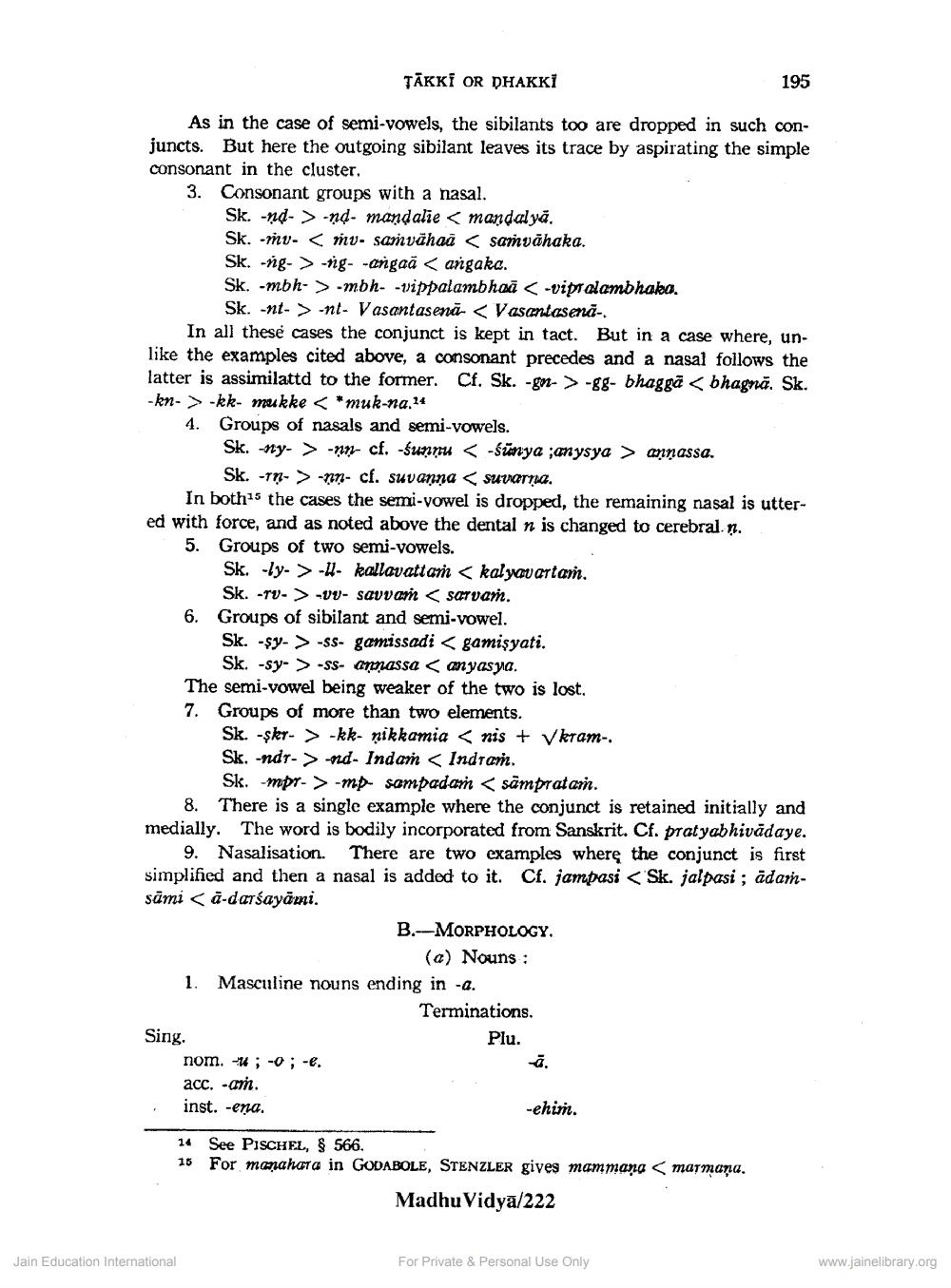________________
TĀKKI OR DHAKKI
195
As in the case of semi-vowels, the sibilants too are dropped in such conjuncts. But here the outgoing sibilant leaves its trace by aspirating the simple consonant in the cluster. 3. Consonant groups with a nasal.
Sk. -nd->-nd. mandalie < mandalyā. Sk. -ív- < mv. samvähaa < samvāhaka. Sk. -ng-> -ng--angaa < angaka. Sk. -mbh->-mbh- -vippalambhaă <-vipralambhaka.
Sk. -nt- > .nt- Vasantasenā < Vasantasena. In all these cases the conjunct is kept in tact. But in a case where, unlike the examples cited above, a consonant precedes and a nasal follows the latter is assimilattd to the former. Cf. Sk. -gn-> -gg- bhagga <bhagna. Sk. -kn-> -kk- mukke < *muk-na 24 4. Groups of nasals and semi-vowels.
Sk. ny- > -^n- cf. -funnu < -sünya ;anysya > annassa.
Sk. -In-> -nn- cf. suvanna < suvarna. In both the cases the semi-vowel is dropped, the remaining nasal is uttered with force, and as noted above the dental n is changed to cerebral.n. 5. Groups of two semi-vowels.
Sk. -ly->-4. kallavattam < kalyavartam. Sk. -Tv->-09- savvam < sarvam. Groups of sibilant and semi-vowel. Sk. -sy-> -SS- gamissadi <gamisyati.
Sk. -sy- > -SS- annassa < anyasya. The semi-vowel being weaker of the two is lost.
Groups of more than two elements. Sk. -şker-> -kk- nikkamia < nis + V kram-. Sk.-ndr-> nd- Indar < Indram.
Sk. mpr->-mp. sampadar < sampratar. 8. There is a single example where the conjunct is retained initially and medially. The word is bodily incorporated from Sanskrit. Cf. pratyabhivādaye.
9. Nasalisation. There are two examples where the conjunct is first simplified and then a nasal is added to it. Cf. jampasi < Sk. jalpasi ; ādansāmi < a-darśayāmi.
B.--MORPHOLOGY.
(a) Nouns : 1. Masculine nouns ending in -a.
Terminations.
Plu. nom. -;-;-. acc. -am inst. -ena.
-ehin.
7.
Sing.
14 See PISCHEL, § 566. 15 For manahara in GODABOLE, STENZLER gives mammang <marmaņa.
Madhu Vidya/222
Jain Education International
For Private & Personal Use Only
www.jainelibrary.org




